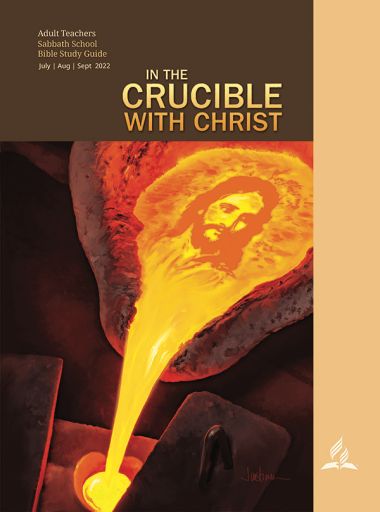
The Crucified Creator
“All things were made by him; and without him was not any thing made that was made” (John 1:3).
All things” were made by Him, Jesus, and yet—according to Scripture—“Jesus wept” (John 11:35). The Creator wept? Even more so, Jesus was “despised and rejected of men; a man of sorrows, and acquainted with grief ” (Isa. 53:3). The Creator, a man of sorrows, despised and rejected? And He once cried out, “My God, my God, why hast thou forsaken me?” (Matt. 27:46).
How could these things be? It’s because Jesus, our Creator, also was our Redeemer, and as such, He was the Crucified God—the Creator who took on humanity and in that humanity suffered through a life of privation and toil that ended with Him hung on a Roman cross.
Thus, our Creator, the One in whom “we live, and move, and have our being” (Acts 17:28), suffered in humanity in ways that none of us ever could. We can experience only our own griefs, our own sorrows; at the cross He bore “our griefs, and carried our sorrows” (Isa. 53:4)—all of them. It’s the most amazing act in all cosmic history.
With that background (that of the crucified God lifted up before us), we will for the next few months seek to better comprehend the incomprehensible—our own suffering, the sufferings of Christians, of those who have committed their lives to Christ. We make no claims to have all the answers or even many; we’re claiming only that “God is love” (1 John 4:8) and that although these things happen, we can trust God despite them and, indeed, grow in grace through them, no matter how painful the process.
This quarter we will study the Word of God and see how other flesh and blood, though radiated in faith, nevertheless faced despair, betrayal, disappointment, loss, injustice, and abuse (sound like anything you can relate to?). How did they cope? What did they learn? What can their examples teach us?
As we look at these people, their experiences, their struggles, and their trials of faith (which might be much like our own), we must always see them contrasted against the background of the Cross. We must always remember that no matter what anyone faces, Jesus Christ, our Creator and Redeemer, went through worse.
Our God is a suffering God. Even Albert Camus, hardly a Christian, understood some of the implications of the Cross and the sufferings of God there: “The night on Golgotha is so important in the history of man only because, in its shadow, the divinity abandoned its traditional privileges and drank to the last drop, despair included, the agony of death.”—The Rebel (New York: Vintage International, 1991), p. 33. Or, as Ellen G. White expressed it: “The cross is a revelation to our dull senses of the pain that, from its very inception, sin has brought to the heart of God.”—Education, p. 263.
Our lessons are not a theodicy, the justification of God in the face of evil. Instead, as we’ve said, they’re an attempt to help us work through the inevitable suffering we all face here in a world in which sinning is as easy as breathing. What we will try to show is that pain, suffering, and loss don’t mean that God has abandoned us; they mean only that, even as believers, we now share in the common lot of a fallen race. The difference is that through Jesus and the hope He offers, we can find meaning and purpose in what seems meaningless and purposeless and that somehow, even if we can’t imagine how, we can trust the promise that “all things work together for good to those who love God” (Rom. 8:28, NKJV)—the God who, though He made all things, suffered all things, too (and that’s why we love Him).
Gavin Anthony, this quarter’s principal contributor, grew up in Sri Lanka as a missionary kid. He worked as a pastor in England and was conference president in Iceland when he authored these lessons.
© 2022 General Conference of Seventh-day Adventists®. All rights reserved. No part of the Adult Sabbath School Bible Study Guide may be edited, altered, modified, adapted, translated, reproduced, or published by any person or entity without prior written authorization from the General Conference of Seventh-day Adventists®. The division offices of the General Conference of Seventh-day Adventists® are authorized to arrange for translation of the Adult Sabbath School Bible Study Guide, under specific guidelines. Copyright of such translations and their publication shall remain with the General Conference. “Seventh-day Adventist,” “Adventist,” and the flame logo are registered trademarks of the General Conference of Seventh-day Adventists® and may not be used without prior authorization from the General Conference.
For questions and concerns about the Adult Bible Study Guide, please contact the Editor of the Bible Study Guide, Clifford R. Goldstein